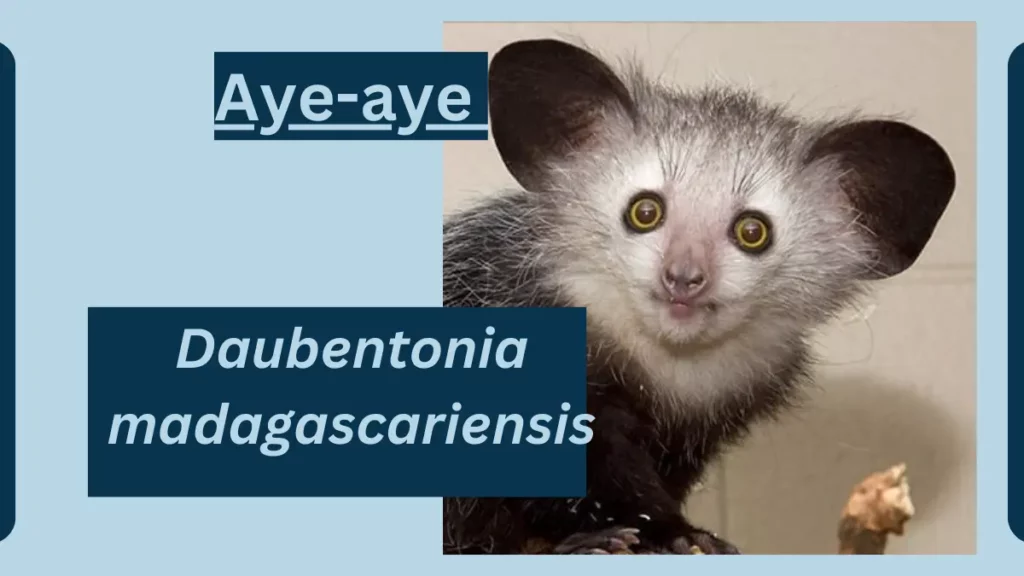Aye-aye Animal Facts
October 13, 2023
The Aye-aye is a unique and enigmatic primate species known for its distinctive appearance, including a long, skeletal middle finger.

Aye-aye
Here are some facts about Aye-aye:
| Topic | Information |
|---|---|
| Scientific Classification | – Kingdom: Animalia |
| – Phylum: Chordata | |
| – Class: Mammalia | |
| – Order: Primates | |
| – Family: Daubentoniidae | |
| – Genus: Daubentonia | |
| – Species: Daubentonia madagascariensis | |
| Origins and Habitat | The Aye-aye is native to the island of Madagascar, where it inhabits various types of forests, from rainforests to dry deciduous forests. It has a restricted distribution on the island. |
| Characteristics | – Anatomy and Appearance: Aye-ayes are known for their unique features, including a long, bony middle finger that they use for tapping on trees to locate insects. They have large eyes and a bushy tail. |
| – Size: They are relatively small primates, with adults typically weighing around 4 pounds (1.8 kilograms) and measuring about 16 inches (40 centimeters) in body length, with a tail that is longer than their body. | |
| Behavior and Lifestyle | Aye-ayes are primarily nocturnal and solitary. They are highly specialized for finding and extracting insects from tree bark. They use their distinctive middle finger to tap on wood and their large ears to locate prey. |
| Diet and Feeding Habits | They are omnivores but primarily feed on insects, especially wood-boring beetle larvae. They also consume fruit, nectar, and seeds. Their unique finger is an adaptation for finding and extracting insects from tree bark. |
| Reproduction and Life Cycles | Aye-ayes reproduce sexually, with females giving birth to a single offspring after a gestation period of around 160 to 170 days. The young are cared for by the mother. |
| Predators and Threats | Natural predators of Aye-ayes include owls and fossas. They also face threats from habitat loss and persecution due to superstitions and beliefs in some Malagasy cultures. |
| Interesting Facts and Features | – Unique Finger: The elongated third finger of the Aye-aye is one of the most distinctive features of this primate. It is used for tapping on trees and extracting insects. |
| – Nocturnal Lifestyle: Aye-ayes are primarily active at night, making them one of the few primate species with a nocturnal lifestyle. | |
| Relationship with Humans | Aye-ayes have often been misunderstood and even persecuted in some parts of Madagascar due to superstitions and beliefs associating them with bad luck. Conservation efforts aim to protect their populations and habitats. |
| Conservation Status and Life Today | Aye-ayes are listed as Endangered by the International Union for Conservation of Nature (IUCN) due to habitat loss and hunting. They are the focus of conservation programs to safeguard their future. |
File Under:







Leave a Reply